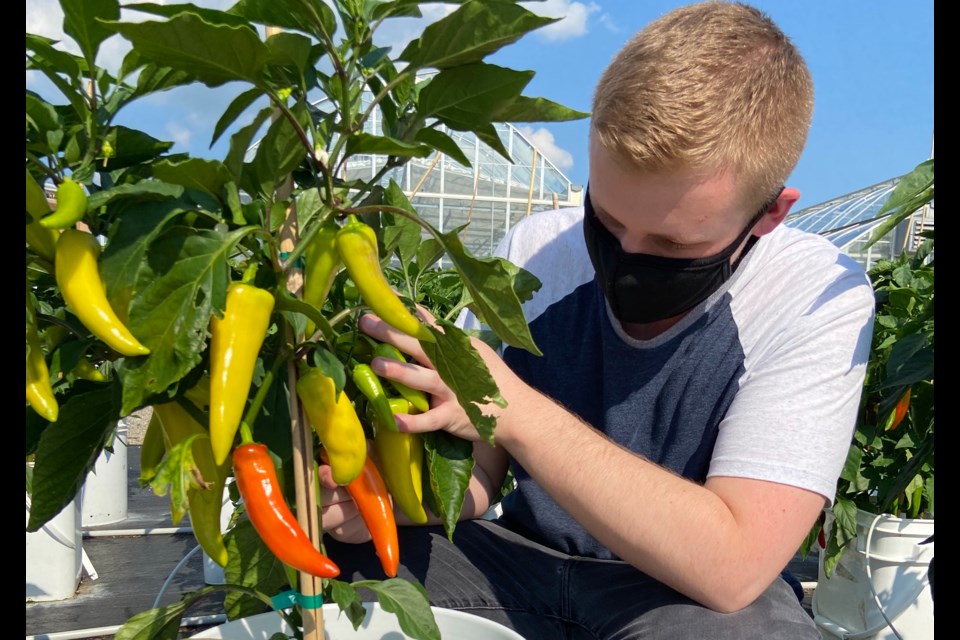Derek Vella is putting local taste buds on notice.
Not only will the University of Guelph student-produced CannonFire hot sauce be back this fall, there’ll be more of it, along with a second flavour.
With CannonFire covering off the hot and spicy end of things, a yet-unnamed pineapple and peppers sauce is set to satisfy those who prefer a more fruity flavour.
“We had a really good response last year,” said Vella, director of the university’s Guelph Food Innovation Centre (GFIC). “We ended up selling out in a couple of hours, so we thought it made sense to make sure that we could spread it around a little more.”
Last year saw students begin with about 25 young pepper plants, grown and hand-picked at the university, to produce 200 bottles of sauce.
This time around, the effort began with about 120 various pepper seeds – varieties from sweet to “super hot” – with plans to up the ante in terms of volume and the second sauce.
“There’s a lot of really good learning in the process of doing that, but now we’re at the stage where I think we have it pretty much figured out,” Vella said of producing CannonFire, which means students don’t get to go through the whole process of developing a product and taking it through to market.
“The idea now is that every year we will still produce CannonFire so we’ve got something people can expect, but then we’re going to try to get every cohort of students … to come up with a completely new, completely different idea and then they can actually go through the experience of designing and labelling, manufacturing and producing it.
“Our students are really creative. I suspect we’re going to get some interesting creations over the years.”
This will be the third year for CannonFire, which is named in honour of the university’s landmark naval cannon.
With peppers currently ripening, it’ll be a while before the sauces are ready for sale. That’s expected to happen in late October or early November.
Proceeds are put toward the cost of creating next year’s batch.


